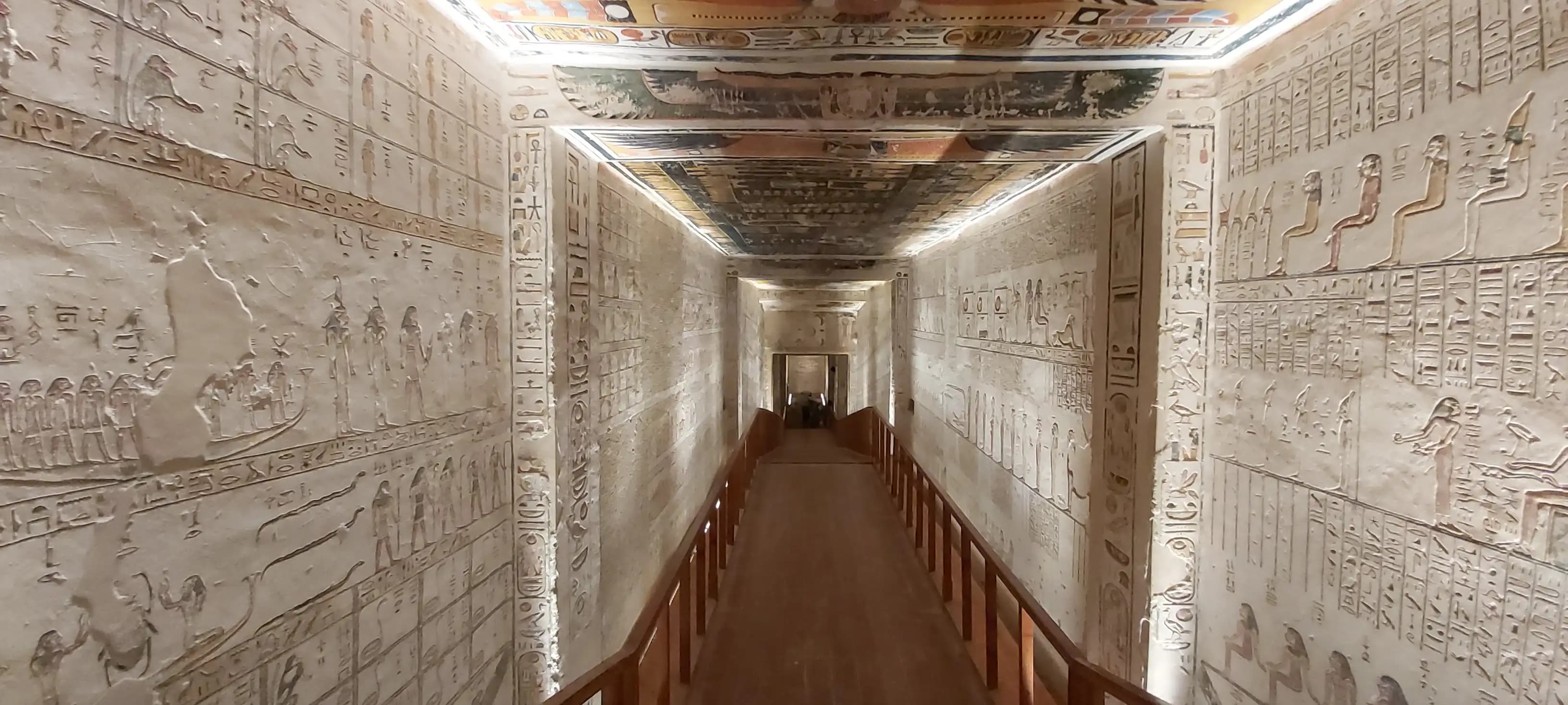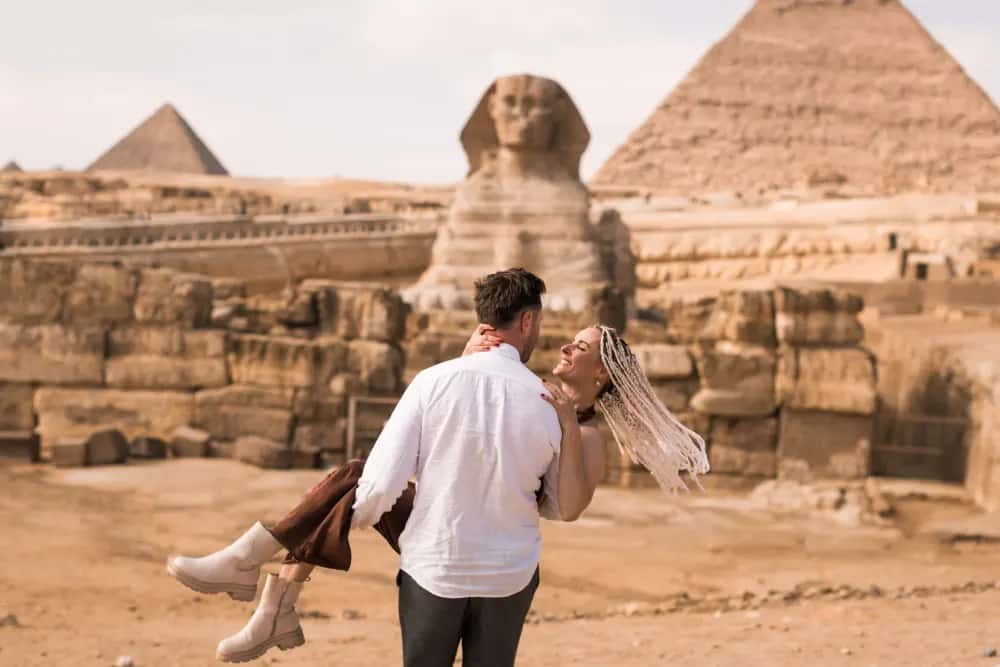
Ancient Egypt has always been a fascination for historians, archaeologists, and enthusiasts alike. The land of the Nile has a rich history spanning over 5,000 years, and one of the most powerful dynasties that ruled it was the New Kingdom. This period of Egyptian history saw the rise of great pharaohs like Hatshepsut, Tutankhamun, and Ramses II, who left behind an incredible legacy that still fascinates us today. But what made the New Kingdom so powerful? How did they achieve such great heights of wealth, power, and influence? In this article, we will delve into the mysteries of this ancient dynasty, uncovering its secrets and exploring its legacy. Join us on a journey through time as we explore the fascinating world of the New Kingdom and its unparalleled reign over the land of the pharaohs.
The 18th Dynasty of ancient Egypt marked the beginning of the New Kingdom period, which lasted from the 16th century BC to the 11th century BC. This dynasty was founded by Ahmose I, who drove out the Hyksos, a foreign group who had ruled Egypt for almost 100 years. Ahmose I was a warrior king who expanded Egypt's borders, leading successful campaigns against Nubia and Palestine. He also initiated major building projects, including the construction of a new capital city, Thebes.
Under Ahmose I, Egypt became a major power in the Mediterranean world. The Pharaoh's successful military campaigns brought wealth and prestige to Egypt, and the country saw a period of unprecedented prosperity. This success continued under the reigns of his successors, who would go on to build the most powerful empire Egypt had ever seen.
One of the most fascinating figures of the 18th Dynasty was Queen Hatshepsut, who ruled Egypt as a pharaoh from 1479 BC to 1458 BC. Hatshepsut was unique in that she was a woman who took on the role of a male pharaoh, wearing a false beard and dressing in traditional male clothing. She was a skilled ruler who initiated many ambitious building projects and trade expeditions, including a famous expedition to the land of Punt, which brought back exotic goods like incense and myrrh.
Hatshepsut's reign was marked by stability and prosperity, and she is remembered as one of Egypt's greatest pharaohs. However, her legacy was largely erased after her death, as her successor, Thutmose III, tried to remove all traces of her from history. It wasn't until the 19th century that her legacy was rediscovered and appreciated by scholars and historians.
Thutmose III was the successor of Hatshepsut and is often regarded as the greatest pharaoh of the 18th Dynasty. He inherited a prosperous kingdom and expanded its borders even further, leading a series of successful military campaigns in Syria and Nubia. Thutmose III was a skilled military strategist who used innovative tactics and technology to defeat his enemies.
In addition to his military prowess, Thutmose III was also a great builder, responsible for many important construction projects, including the Temple of Amun at Karnak. He also played a major role in the development of religion in ancient Egypt, promoting the worship of Amun as the supreme god of the Egyptian pantheon.
Akhenaten was a pharaoh who ruled Egypt during the 18th Dynasty, from 1353 BC to 1336 BC. He is known for his revolutionary religious reforms, which centered around the worship of a single god, the Aten. Akhenaten moved the capital of Egypt to a new city, Akhetaten, and encouraged a more naturalistic style of art.
The Amarna Period, as it is known, was a time of great change in ancient Egypt. Akhenaten's religious reforms were controversial, and his rule was marked by political upheaval and economic turmoil. After his death, his reforms were quickly reversed, and the old gods were once again worshipped in Egypt.
Tutankhamun is perhaps the most famous pharaoh of the 18th Dynasty, thanks to the discovery of his tomb in 1922 by Howard Carter. Tutankhamun was a minor pharaoh who ruled for only 10 years, from 1332 BC to 1323 BC. He is known for his young age at the time of his accession, as well as his lavish tomb, which contained an incredible array of treasures.
Tutankhamun's reign was largely uneventful, and he is not considered one of the great pharaohs of ancient Egypt. However, the discovery of his tomb has provided us with a wealth of information about life in ancient Egypt, as well as a glimpse into the opulence of the 18th Dynasty.
The 18th Dynasty of ancient Egypt left behind a rich legacy of art, architecture, and religion. The pharaohs of this dynasty were great builders who constructed magnificent temples and tombs, many of which still stand today. They also patronized the arts, commissioning beautiful works of sculpture and painting.
Religion played a major role in ancient Egyptian society, and the 18th Dynasty saw the development of a complex religious system that centered around the worship of multiple gods. The pharaohs were seen as divine beings who could communicate with the gods, and they played a central role in religious ceremonies and rituals.
Despite centuries of study, there is still much we don't know about the 18th Dynasty of ancient Egypt. However, recent discoveries and ongoing research have shed new light on this fascinating period of history. For example, in 2017, archaeologists discovered a tomb in Luxor that belonged to a high-ranking official from the 18th Dynasty. The tomb contained well-preserved wall paintings and other artifacts that provide valuable insights into life in ancient Egypt.
Ongoing research is also helping us better understand the religious beliefs and practices of the 18th Dynasty. New translations of ancient texts and inscriptions are revealing previously unknown details about the gods worshipped by the ancient Egyptians and the role of the pharaohs in religious ceremonies.
The enduring fascination with ancient Egypt has led to the 18th Dynasty being featured in countless books, movies, and TV shows over the years. Some of the most popular works include the novels "The Egyptian" by Mika Waltari and "Nefertiti" by Michelle Moran, as well as the movies "The Mummy" and "The Scorpion King."
More recently, the 18th Dynasty has been the focus of several TV shows, including "Tut" and "Egypt's Unexplained Files." These shows explore the mysteries and legends of ancient Egypt, bringing the world of the pharaohs to life for modern audiences.
The 18th Dynasty of ancient Egypt was a remarkable period in history, marked by great pharaohs, stunning architecture, and complex religious beliefs. Despite the passage of thousands of years, this period continues to fascinate and captivate us, as we seek to uncover the secrets of this ancient civilization. Whether through ongoing research, new discoveries, or popular culture, the legacy of the 18th Dynasty lives on, inspiring us to continue exploring the mysteries of ancient Egypt.
“In my opinion, I believe a good writer makes content easy to read, and entertains the reader, making comprehension effortless. Egypt is a country that truly has it all. Its rich history, stunning landscapes, and friendly people make it a must-visit destination for any traveler. I hope you'll have the opportunity to experience it for yourself.
By Egypt Travel Blogger
The best Egypt Vacation Package: 11 days Cairo, Nile Cruise and Hurghada. Starting by ancient Cairo, Cruising the Nile t ...
$ 1799 | Per Person

A romantic Egypt Honeymoon Trip. Visit the Pyramids and Sphinx with Nile cruise adventure in Luxor and Aswan watching li ...
$ 1199 | Per Person